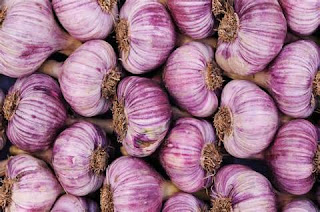Our first seed order came in today. It included a packet of 1000 Candy Onion seeds. What was I thinking? We seed 12 packs of onions per flat, with 60 seeds per pack--that's 720 seeds per flat--so 1000 seeds is only 1 flat and 4paks. We sell a lot of onions. So I had to scramble to add another 5000 seeds to another company's seed order, since it would cost $8.50 to ship the 5000 seeds.
Seeds are so expensive but we need healthy seeds to grow good plants.
While on the topic of onions, these are the varieties of onions and onion-related plants we grow:
Candy Onions: These are day neutral onions, large and sweet and store fairly well (ours keep well into March).
Walla Walla Onions: These are also large, sweet, and we find we have to use these first--keep OK till end of Dec.
Ailsa Craig, Sister strain to Kelsay Sweet Giant, can become giant onions under ideal growing conditions, adequate moisture and a long enough season. Our growing season is not long enough for giant ones, but they become a good size, and are sweet enough to eat large slices raw. We find that these keep marginally longer than Walla Walla.
Red Onions For me these are the best keepers, usually right till green onions are available from next year's crop.
White Sweet Spanish onions: Large and sweet, they are the second-longest keepers, well into spring. These are an open-pollinated heritage variety.
Leeks: We love leek and potato soup, aka "Cock-a-leekie Soup" when made with chicken broth and meat. Ours don't get as fat as store bought ones due to short season, but worth growing.
Onions need fertile soil, and a steady supply of moisture,since they have shallow root systems. They do not like any competition from weeds at all. My onion beds are the first to be weeded, and are rigorously maintained even when other plants get neglected.
I spoke about another onion family member, garlic, in the previous post.
I plant all my onions from young plants started from seed in the greenhouse, but one can also grow them from sets--small onion bulbs grown the year before, and properly cured. The ideal size of sets is 1/2-3/4" in diameter. Smaller ones won't make large onions and larger ones may go to seed very quickly.
The bulbs of onions should not be covered with soil. But leeks can be planted deeper to blanch the lower part of the stalk.
For my own garden I am trying Borlotti Beans. They have interesting pods and if dried have nice white and red speckled bean seeds.
And just for fun, we are planting Canary Bird Vines. This vining plant is related to nasturtiums, but can easily grow to 7' tall on a trellis.
'Tis the Season..
7 months ago













